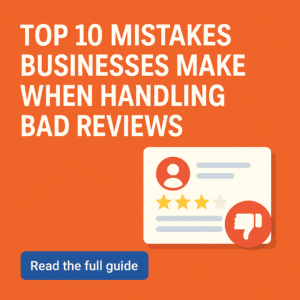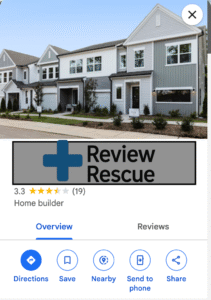How to Professionally Respond to a Review in 2025
Online reviews remain one of the most powerful tools consumers use to evaluate businesses. But in 2025, it’s not just the review that matters—your response carries equal weight. According to a study by Harvard Business Review, 89% of consumers read business responses to reviews. This means every reply you post is a public reflection of your brand, professionalism, and customer service philosophy.
Whether it’s praise or criticism, how you respond to a review can build trust, boost your visibility in search results, and even influence future buying decisions. In this post, we’ll walk you through the best practices for professionally responding to reviews in 2025.
Why Responding to Reviews Still Matters in 2025
The digital landscape continues to evolve, but the core reasons to respond to reviews haven’t changed—they’ve intensified.
1. Builds Consumer Trust
Potential customers read responses to gauge how you treat people. A thoughtful reply shows that your business is attentive, transparent, and values feedback.
2. Impacts Local SEO
Search engines like Google factor in review activity—including responses—when determining your local ranking. Timely, relevant replies help signal that your business is active and engaged.
3. Shapes First Impressions
Your response isn’t just for the reviewer—it’s for everyone else reading the review later. Responding the right way can reframe a negative experience or reinforce a positive one.
4. Demonstrates Professionalism
Even in the face of unfair or exaggerated reviews, a professional response shows that you’re composed and customer-focused.
How to Respond to Positive and Negative Reviews the Right Way
Your tone and approach should vary based on the type of review, but the goal remains the same: make your business look responsive, courteous, and human.
Responding to Positive Reviews
These are your easiest wins—don’t miss the opportunity to strengthen the relationship.
Tips:
Say thank you and use the reviewer’s name if possible
Acknowledge what they appreciated
Encourage them to return, refer friends, or try a new product
Example:
Thank you so much, Sarah! We’re thrilled to hear you had a great experience with our team. Your kind words mean a lot to us. We look forward to seeing you again soon!
Responding to Negative Reviews
These can be more challenging—but also more impactful. Responding well to a negative review can demonstrate accountability, calm tensions, and even lead to review removal if the complaint is resolved.
Tips:
Remain calm and polite—don’t get defensive
Acknowledge the experience without admitting fault
Offer a path to resolution, ideally offline
Keep it short, factual, and respectful
Example:
Hi Mark, thank you for sharing your concerns. We’re sorry to hear about your experience and take this feedback seriously. We’d like to learn more and see how we can make things right—please contact us directly at [email].
Review Response Best Practices for 2025
Modern consumers are savvier than ever, and platforms have become more nuanced in how they showcase reviews and replies. These best practices ensure you’re responding professionally and effectively.
1. Be Authentic, Not Robotic
Avoid copy-pasting generic replies. Even if you’re using templates, personalize each response with the customer’s name and reference specific details.
2. Tailor Your Tone to the Platform
Each platform has its own etiquette. A formal response might work on Glassdoor, while Yelp may call for a more conversational tone. Review policies and user expectations per platform.
3. Respond Quickly
Timing matters. A delay in response can signal disinterest or poor customer service. Aim to respond within 24–72 hours of the review being posted.
4. Don’t Take the Bait
Some negative reviews may feel unfair or exaggerated. Resist the urge to argue or prove a point. A calm, measured response will always reflect better on your business.
5. Avoid Legal-Sounding Language
Unless you’re addressing a serious issue, overly formal or legalistic responses can feel cold or intimidating. Keep the tone approachable and human.
6. Monitor for Patterns
If similar complaints show up across multiple reviews, it’s a sign something may need attention operationally. Let your reviews guide business improvement—not just PR.
How to Streamline Review Responses
Managing reviews can be time-consuming, especially across multiple platforms. In 2025, a range of tools and services exist to make the process more efficient—without sacrificing professionalism.
Use Review Monitoring Software
Set up alerts for new reviews so you can respond promptly. This also helps you catch and address fake or inappropriate content early.
Train a Dedicated Team Member
Designate someone on your team to handle customer reviews. Equip them with templates, tone guidelines, and escalation procedures for tricky reviews.
Use AI Tools (With Caution)
AI can help generate draft responses, but always review and personalize them before posting. Human oversight is key to avoiding tone issues or awkward phrasing.
Know When to Escalate
If a review contains false claims, harassment, or violates platform policies, you may be eligible for removal. Understanding the Terms of Service on each platform is essential.
Final Thoughts
In 2025, how you respond to a review can be just as impactful as the review itself. Whether it’s praise, criticism, or something in between, your responses are an opportunity to demonstrate your values, professionalism, and customer care.
By responding authentically, quickly, and with the right tone, you not only build trust with your current customers—you influence every future customer who reads that review.
Struggling with how to respond—or dealing with unfair reviews that hurt your business?
Review Rescue can help you craft the right responses and remove harmful content that violates platform policies.



